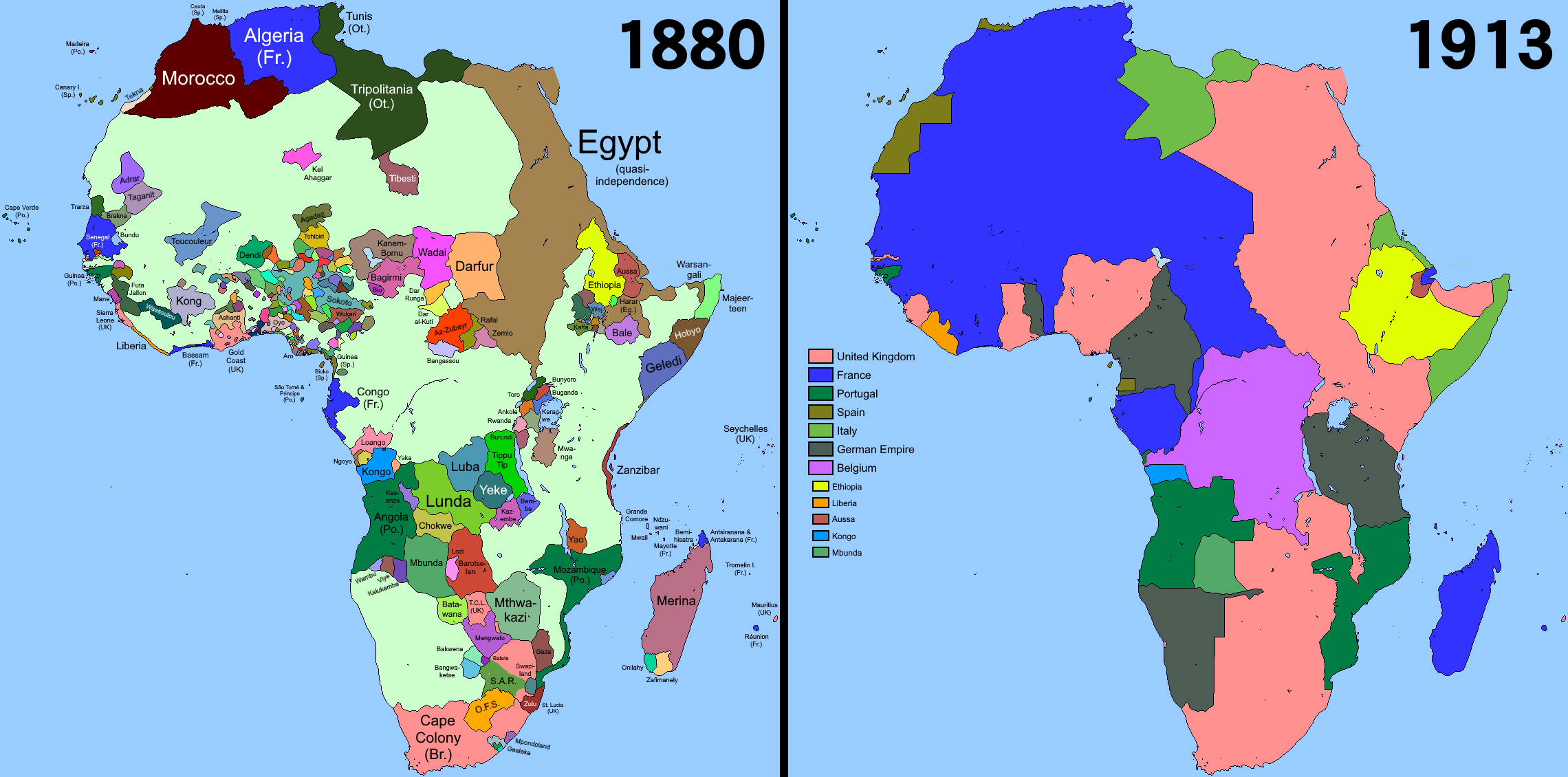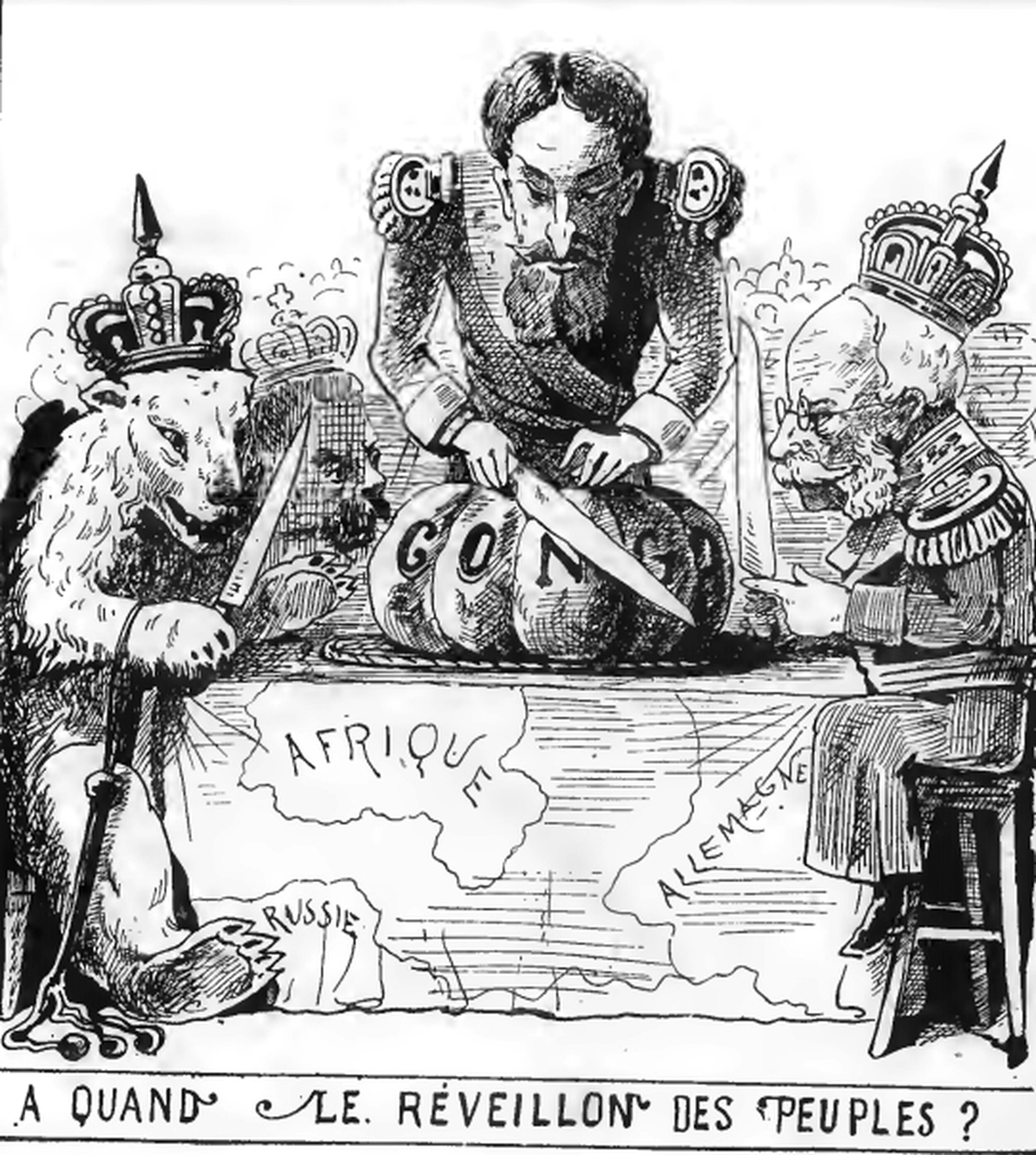#22 Understanding Colonialism: Africa (Part II)
The Colonisation of the African Continent from 1884 to 1960
Introduction
We take for granted today the boundary lines which divide countries. Those borders set in 1884 had little rationale but continue to have long-term consequences and these relatively small geographical areas would have difficulties in development. 80 years after being divided, the new countries were provided with relative Independence. This was partially due to their struggles against colonial rule and partly due to the decision taken by the USA to have economic access to the world. They all kept the boundaries created during colonialism. The entire continent with their small nation-states still struggles as one of the poorest areas of the world. The story I am telling here is of how Europe underdeveloped Africa and set the stage for this to happen. In this blog, I deal with African colonialization in the last part of the 19th Century, excluding Southern Africa.
1884: Africa Divided
After 1884, the continent was divided up between the British, French, Belgian, Portuguese, Italians and finally the Germans. European military equipment proved superior to African when the initial colonisations were met by limited resistance. The war-like Zulus were defeated; only the Ethiopian East African Empire was strong enough to defeat a British Abyssinian expeditionary force in 1868, the Ottomans in 1875 and the Italians in 1896. Ethiopia remained unoccupied, but the rest of the continent became colonised at this time.
Comparison of Africa in the years 1880 and 1913. Uses Qazaq2007's QBAM map from alternatehistory.com. By Somebody500 - Own work, CC BY-SA 4.0, https://commons.wikimedia.org/w/index.php?curid=92437472
Many straight lines were drawn to mark out the new boundaries between one African state and another as the continent was carved up between the European colonisers. The British and the French took the largest areas; the Belgians the Congo, and the Portuguese their old colonies of Angola and Mozambique. The Germans grabbed southwest Africa, Namibia and Tanganyika, the Italians Guinea Bissau. All began the search for minerals and gold, heralding a new era of colonial and exploitative history.
Cartoon depicting Belgian King Leopold II in the middle, German Emperor William I on the right, and a crowned bear (representing the Russian Empire on the left), cutting up a pumpkin (representing the Congo) at the Berlin Conference of 1884.
Slavery by Another Name
But the new colonial powers had to find ways of earning enough money to avoid colonial subsidies. Rubber was one source. The Belgians found rubber in the Congo and the Germans in Southern Tanganyika. The problem was how to harvest it and transport it to the coast for export. Thereafter atrocities followed on a scale comparable to the colonisation of the Americas. King Leopold of Belgium, whose companies controlled the rubber in Congo, and the Germans who attempted to create settlements, created conditions that we recoil from in horror today.
After 1896, it’s estimated half a million Congolese Africans died and hands were cut off. Disease and famine were rife, with people treated as expendable commodities. King Leopold was said to have made 70 million Belgian Francs.
At the same time, the Germans were aggressively looking for rubber in the south of German East Africa. The peoples of the area were small disparate groups of peasant-like farmers. Yet so great was the oppression that peoples from diverse ethnic backgrounds found ways to come together and fight the Germans. The Maji Maji rebellion of 1905-7 followed. This rebellion covered 100 square miles in what is now south-eastern Tanzania. People with spears and bows and arrows faced an army with repeater rifles. The numbers killed are unknown, but estimates range from 75,000 to 300,000. The Germans also used famine and disease to finally subdue the population. As in the Congo, 30% to 50% of the Tanzanian population was killed.
All the new African colonies created after 1884 had the same problems or challenges; how to be self-sufficient as a colonised territory that had been settled by private companies in close association with their nation-states. Only after settlement had European states provided legal and, where necessary, military backing. Thus, private profit and national policy had been combined since the creation of the early monopoly companies in the 1600s.
Cecil Rhodes, who became the prime minister of Cape Colony in the south (1890-1896) founded Rhodesia and Malawi through the aegis of the British South Africa Company. Rhodes made himself hugely wealthy through his gold and diamond mines, paving the way for new British annexation and self-sufficient colonies.
The German East Africa Company, DOAG (Deutsch-Ostafrikanische Gesellschaft) was also a chartered colonial organisation, bringing about the establishment of German East Africa, a territory which eventually comprised the areas of modern Tanzania, Burundi, and Rwanda. The company held Dar es Salaam and Bagamoyo with the help of the German navy, but in 1889 had to request the assistance of the German government to put down the rebellion. In 1891, after it became apparent that the company could not handle its dominions, it sold out to the German government, which began to rule German East Africa directly. The company, however, continued to operate its many enterprises - mines, plantations, railways, banking, minting and so on - before it relinquished them to German colonial administration. It subsequently operated as a land company within the German territory until Britain occupied German East Africa during World War I.
The Imperial British East Africa Company (IBEAC) was the administrator of British East Africa, the forerunner to the East Africa Protectorate, later Kenya. IBEAC was a commercial association established to develop African trade in areas controlled by British colonial power. Created after the Berlin Treaty of 1885, it was led by William Mackinnon. The British government encouraged him through an imperial charter, granting immunity of prosecution to British subjects whilst allowing them the right to raise taxes, impose custom duties, administer justice, make treaties and otherwise act as the government of the area.
Likewise, in West Africa, The Royal Niger Company annexed Nigeria after many wars. African colonisation was predicated on private profit, and self-sufficiency was a precondition. All the talk of ‘civilising’ missions, backed by widespread missionary activity, was mere ideology to appease consciences and justify predatory intent.
But self-sufficiency required products created for export. Earlier forms of colonisation had involved settlers: people for whom the home nation wished to get rid of, like beggars, vagrants, Jews from Portugal in the 16th century, Catholics from Ireland and Dutch Calvinists in the 17th century. A disparate array of Europeans had spread across the world as settlers to colonise and farm. At the end of the 19th century, attempts were made to persuade masses of people to settle in Africa. Only the new area that became Kenya attracted significant numbers. British settlers in Kenya were like earlier settlers: aggressive, arrogant and fearful for their women, demanding public hangings at the smallest provocation. From the British government’s point of view, the export of settlers made sure that the British state did not have to subsidise a new colony.
By 1914, the entire African continent had been prepared for the underdevelopment that was to dominate the subject of development studies from the 1960s onwards in our universities.
Some Conclusions
Tanzania recovered, first under Julius Nyerere. But the Congo has never recovered. The Congo is one of the great mineral-rich countries of this world, and her people some of the poorest. The story of the exploitation of the peoples and lands of the Congo is another story. If anyone doubted that colonialism and post-colonialism were about the extraction of wealth for the benefit of the West, this should be your area of study.
African History:
Serious readers should visit the library in the Travellers Club in Pall Mall London. Here you will find a unique collection of books published from the 1770s through to 1914. British and French travellers wrote up their travel accounts of place and peoples they ‘discovered’ literarily across the world. To them, these were travels of discovery. And, of course, they viewed places and peoples through racialist eyes of their time.
The Early History of Africa and Slavery:
Walter Rodney, How Europe Underdeveloped Africa, Verso 2018.
Walter Rodney, A History of the Upper Guinea Coast, 1545-1800, Monthly Review Press 1989.
Southern African colonial history:
Noel Mostert, Frontiers The epic of South Africa's Creation and the Tragedy of the Xhosa People, Pimlico 1993.
Sol Plaatje, Native Life in South Africa: Past and Present, Wits University Press 2016
Sol Plaatje, A Biography, Raven Press 1984.
1884 and after:
Thomas Pakenham, The Scramble for Africa: The White Man's Conquest of the Dark Continent, 1876-1912, Penguin Random House LLC 1992.
The Congo catastrophe was documented by:
E D Morel, Red Rubber: the story of the rubber slave trade flourishing on the Congo in the year of grace 1906, Nassau Print 1906.
E D Morel, King Leopold’s rule in Africa, W. Heinemann 1904.
Roger Casement, was the whistleblower; an Irish nationalist and a diplomat for the British Foreign Office; knighted by the Crown for his work, captured by the British in the Irish rising 1916 and hanged.
Joseph Conrad, Heart of Darkness, 1902.
Mario Vargas Llosa, The Dream of the Celt is a novel written by Hispano-Peruvian writer and 2010 Nobel laureate.
The German Tanganyika catastrophe is much less well documented at least in English.
A few key articles by John Iliffe and Thomas Pakenham are the main sources.
More Maps
Maps of Africa in 1830, 1885 and 1914 can be found from The Map Archieve here: https://www.themaparchive.com/the-scramble-for-africa/
Another map comparing the colonial presence in Africa in 1878 and 1914: https://www.facinghistory.org/resource-library/image/colonial-presence-africa
Copyright Notice. This blog is published under the Creative Commons licence. If anyone wishes to use any of the writing for scholarly or educational purposes they may do so as long as they correctly attribute the author and the blog. If anyone wishes to use the material for commercial purpose of any kind, permission must be granted from the author.











The early Colonies from 1492 onwards were all ruled and settled by ‘white settlers.’ The areas settled included the Americas and to a small extent the Portuguese colonised Africa, and the Dutch settled in Southern Africa in 1652. All of these can be characterised as ‘settler colonies.’